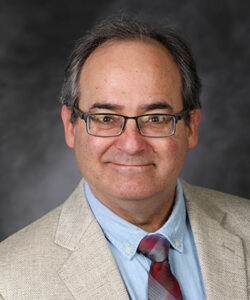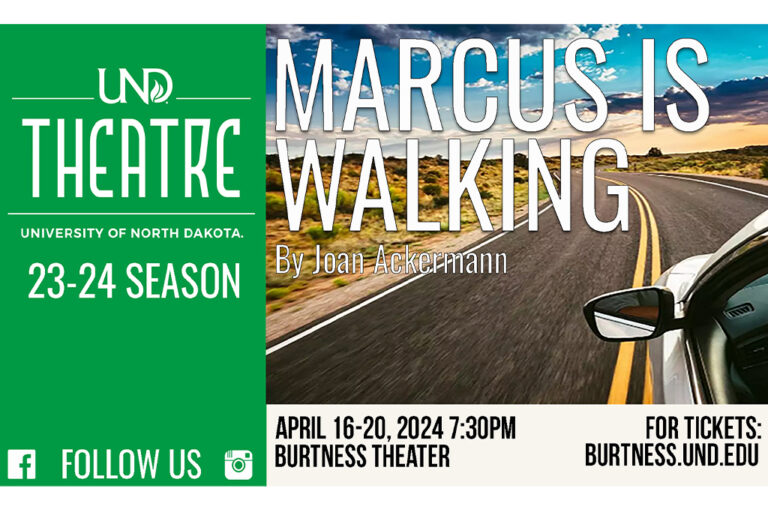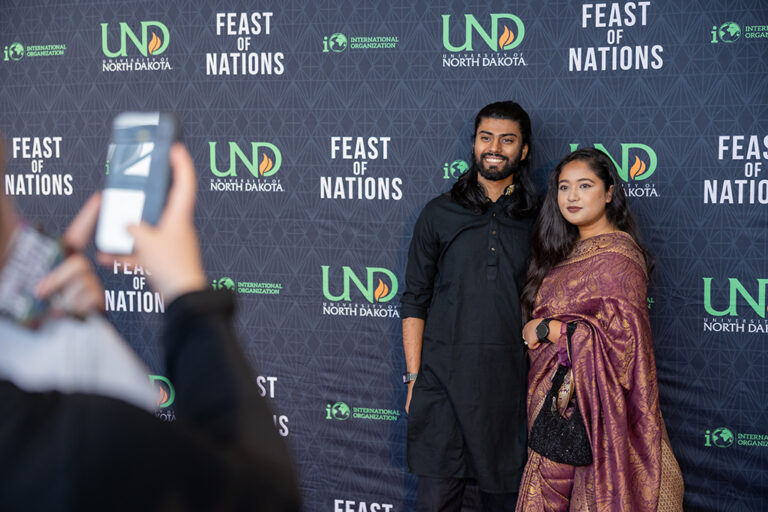Art project turns spotlight on Red Light districts
Acacia Geske’s unforgettable ceramics stem in part from a childhood near-miss with human trafficking
As they walked across the lawn toward the Hughes Fine Arts Center at UND, visitors back in April likely felt a certain sense of security. They knew their chances of being, say, kidnapped and sex trafficked at that moment were extremely remote.
But that sense may have been shaken when the visitors entered the Center’s Myers Gallery, where Acacia Geske held her Bachelor of Fine Arts Exhibition on April 19-22. Because Geske’s works in ceramics and other media are vivid reminders that while most North Dakotans and Minnesotans enjoy comparatively few worries about sex trafficking, many, many other people around the world aren’t so lucky.
The exhibit, titled “Hidden in the Red-light,” was “an installation having to do with the Red Light District,” Geske said.
“Through my art, I try to bring awareness to the issue of human trafficking. For example, I think that hands always tell a story, so a lot of my pieces integrate bound hands to represent isolation or entrapment, while also telling the hands’ stories at the same time.”
In another of Geske’s ceramic works, hands grip the thin, closely spaced lines of a bar code, like a prisoner would do from the inside of an e-jail cell. “I have images of bar codes representing the selling and buying of humans as well,” Geske said.
Then in the space where the bar code’s identifying number usually is found, Geske added the number 1 888 373 7888. “That’s the National Human Trafficking Hotline,” she said.
“It’s just a small detail, but it’s all part of trying to bring a light to the topic.”
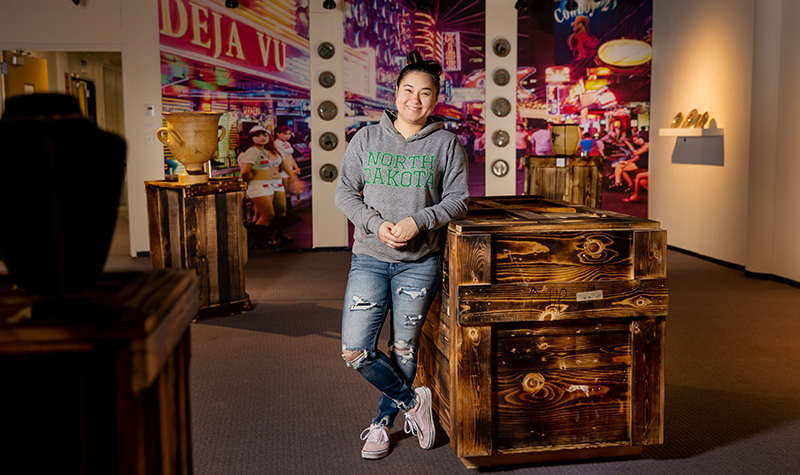
Narrow escape
Geske’s intense feelings about human trafficking are informed by both her past experiences and future plans. She grew up in Thailand, and at the age of three, came within moments of being abducted, she said.
“I was at something like the grand opening of a grocery store with my family,” she said. “We were all around the checkout area, and somehow, I got separated.
“A lady said she would help me; and being a naïve little kid, I believed her.”
Moments later, Geske’s grandmother ran out of the front doors and saw the woman dragging the toddler across the parking lot. “My grandma ran after her and grabbed me from her,” Geske said. “That’s what I’ve been told, because the woman must have drugged me or something. I was passed out for maybe 12-15 hours.”
Geske’s grandmother’s intervention may have saved Geske from the child sex trade, given the prevalence of that crime in Thailand, Geske believes.
This sense of a narrowly averted, much crueler life has stayed with her, especially as reports of sex trafficking in Thailand and elsewhere – including the United States – have continued to the present day.
That’s also why at UND, Geske majored in not only visual arts, but also forensic science. For her goal is to pursue a career in anti-trafficking: “In high school, I took anatomy, and it was one of my favorite subjects,” she said. Moreover, learning chemistry – one of Geske’s minors, along with biology – is a big part of ceramics.
Meanwhile, “I knew I wanted to help missing people and trafficking victims,” Geske said. And it turns out that anatomy, chemistry, biology and forensic science are all key elements of anti-trafficking work.
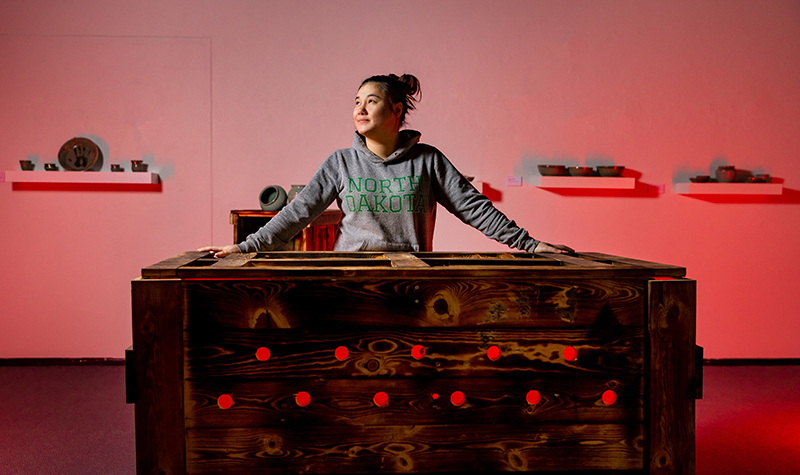
Building awareness
Wesley Smith, a UND associate professor of Art & Design, ceramics specialist and Geske’s advisor, said Geske’s creative pieces show exceptional skill, maturity and depth.
“She took something that is an issue around the world, then she spoke about it in her own way,” Smith said.
“And she gave it power visually by putting it on the wall, putting it on the pedestals. She turned it into something that people could look at and begin to decipher and understand.”
Furthermore, Geske’s exhibit unforgettably juxtaposed the beauty, detail and traditional Thai glazes and designs of her ceramics with their jarring imagery of trafficking.
“She tackled a very painful, disturbing and hard-to-address subject matter,” Smith said. “But she broke it down; and as you crossed the gallery, the works made the subject not only understandable, but also visceral. You could see it, you could practically touch it, because it was in the gallery.”
In short, “she gave the topic a voice that it didn’t have, especially to people in the United States who don’t grow up with that fear,” Smith said.
Or as Geske herself put it, “with my art, it’s just me speaking out for those who can’t speak out. I feel that’s my mission, given that I was only seconds away from living an entirely different life.”
